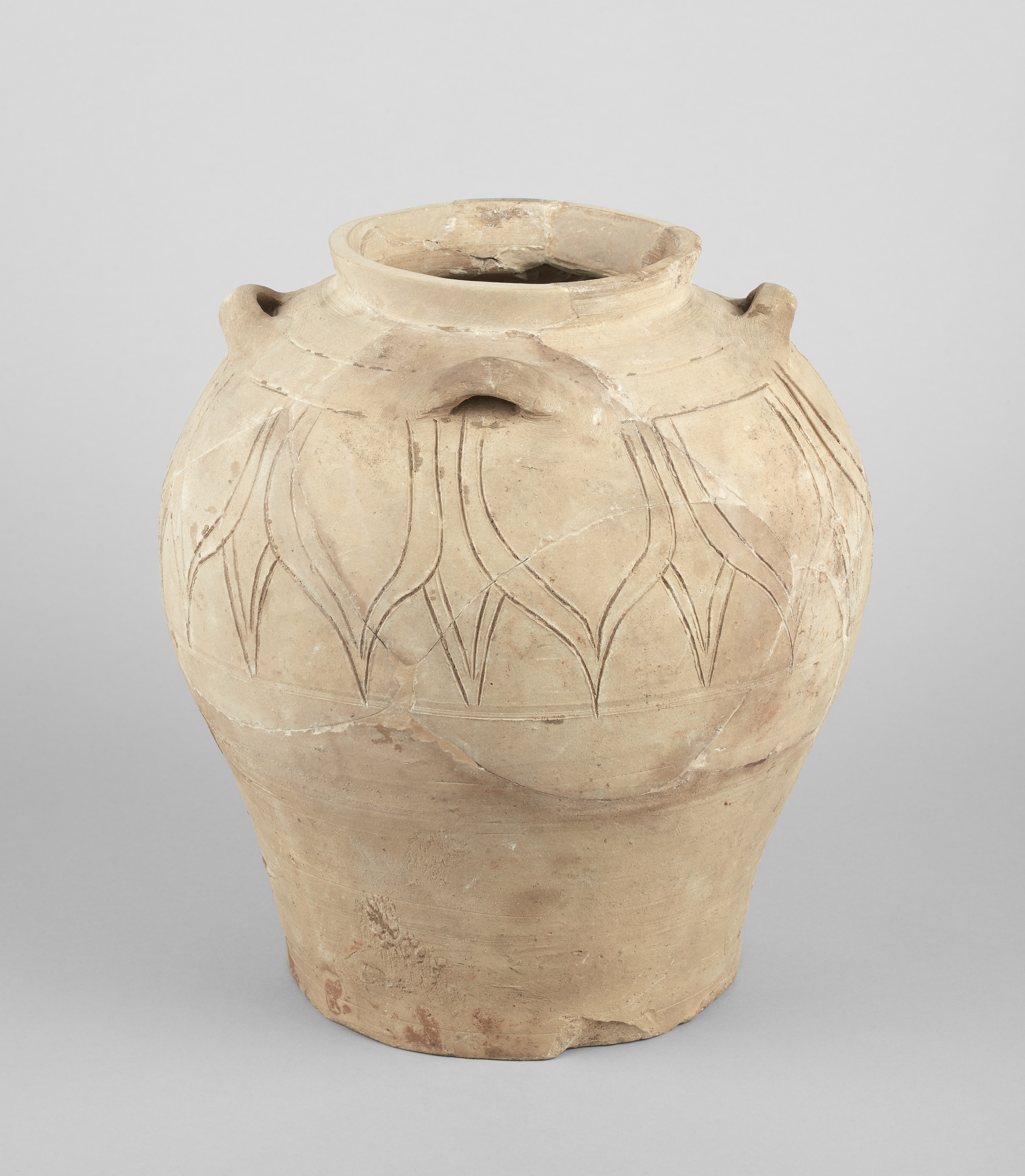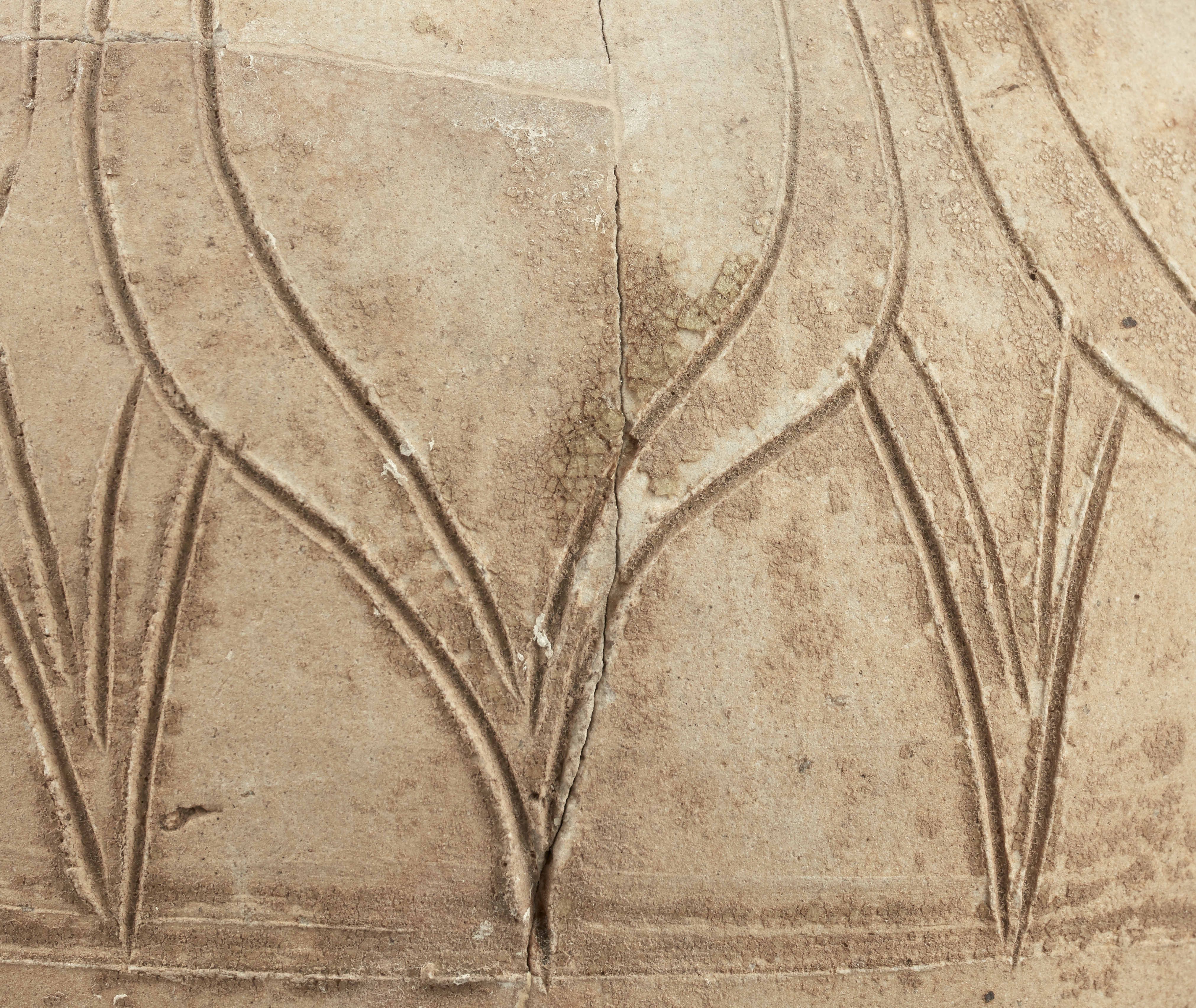
Jarre
Grès
Jarre
Sépulture Tang n°1, site de Đông Sơn, Thanh Hóa
Don fouilles : Mission Janse Indochine (1934-1935)
M.C. 8020 B
This jar was found in 1935 by Olov Janse when he excavated several graves contemporary to the Chinese Tang dynasty in Đông Sơn village. It was placed outside Tomb No. 1, which was built of bricks to a rectangular plan. Unlike the tombs of the Giao Chỉ period on the same site, tombs from the An Nam era are so narrow that the body of the deceased could only just be squeezed in, perhaps wrapped in a simple shroud. Tomb No. 1 measured 2.38 metres long and 70 centimetres wide. Three jars including this one were placed outside the brick structure, against the shorter east wall. Movements in the ground exerted such pressure over the centuries that these jars were often found broken into pieces and were restored after the excavation. They may have contained alcohol offered to the soul of the deceased.
This jar differs from other specimens found in its incised decoration of lotus petals on the shoulder. The acidic soil has damaged the glaze that formerly covered the whole piece but that lost its adherence and crumbled. Traces of it remain, however, in the incised decoration and areas under the handles. This jar therefore originally featured a brilliant and finely crackled olive-green glaze. The lotus petal decoration reflects the importance of Buddhism, whose symbolism began to feature even on the ceramic ware of the time. From the 11th century, the lotus motif would become omnipresent.
Buddhism, a religion of Indian origin, spread to the port cities of northern Vietnam in around the 2nd century. It followed the maritime route plied by traders between southern India and the Indochinese peninsula. In parallel, the period extending from the late Han period to the late Tang era was marked by the expansion of Buddhism in China, in which the Protectorate of An Nam participated. With independence, from the 10th century, this religion would become the state religion.

